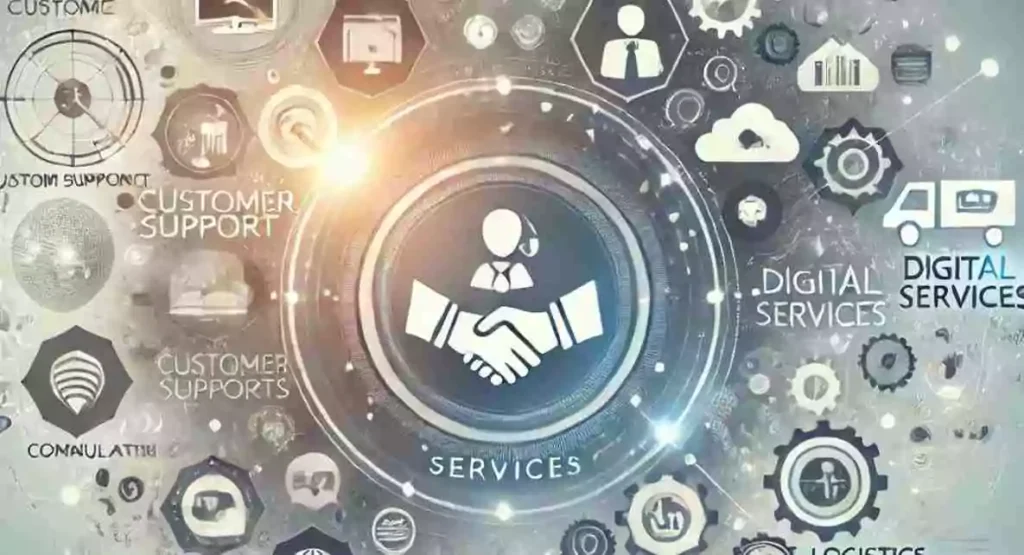6 Types of Branding in Marketing
Branding is an essential part of marketing, but the way you brand a product, a person, or a service must be different. For example, imagine you’re selling shoes, offering a consulting service, and promoting yourself as a public speaker. You can’t use the same branding for all three. A shoe brand might focus on quality and style, a consulting service might focus on trust and expertise, and a public speaker might focus on their personality and unique message. Each needs a different approach to connect with its audience effectively.
What is Branding in Marketing?
Branding in marketing is the process of creating a unique identity for your business, product, or service. It involves the use of design, messaging, and marketing strategies to make your business stand out from the competition. This can include everything from your company logo and colors to the way you communicate with customers.
For example, Coca-Cola’s branding includes its iconic red and white logo, as well as its messaging focused on happiness and togetherness. This branding helps people instantly recognize Coca-Cola and associate it with positive emotions.
Branding goes beyond just a logo or a tagline; it’s about how customers feel about your business. Good branding helps build trust and creates a relationship between the customer and the company.
6 Major Types of Branding in Marketing
Branding can be done in different ways, depending on what a business is trying to achieve. Let’s look at the first three types of branding and how they differ from general branding. Each type focuses on specific aspects of a business or product, which makes it unique from others.
Corporate Branding

Corporate branding is about branding the entire business, not just a product or service. It focuses on the company’s identity, values, and reputation. This type of branding is important because it helps create trust and loyalty among customers, employees, and business partners. The goal is to make the company itself recognizable and reliable in the eyes of its audience.
How It’s Different from Normal Branding
Normal branding may focus on a single product or campaign, but corporate branding is about the whole company. It influences every part of the business, including products, employees, and how the company is perceived overall.
Examples
- Apple: Apple focuses on innovation, quality, and a premium feel. Their corporate branding is known for sleek design, top technology, and a strong focus on privacy and user experience.
- Google: Google has built its corporate brand on being accessible, fast, and a leader in innovation. It’s more than just a search engine; it’s about technology that makes life easier.
- Coca-Cola: Coca-Cola’s corporate branding is about happiness, sharing moments, and spreading positivity. Their brand goes beyond the product to represent experiences.
Personal Branding

Personal branding is how an individual presents themselves to the public. This is often used by professionals like influencers, freelancers, or business leaders. Personal branding helps people establish a unique identity and create a personal connection with their audience.
How It’s Different from Normal Branding
Instead of promoting a business or product, personal branding focuses on promoting the person. It’s about how the individual wants to be seen, their expertise, values, and personality. Personal branding often uses social media and personal interactions to grow.
Examples
- Oprah Winfrey: Oprah is a great example of personal branding. She is known for her authenticity, compassion, and wisdom. She built her personal brand around connecting with people and helping them improve their lives.
- Elon Musk: Elon Musk uses personal branding to represent innovation and futuristic thinking. His brand is built around space exploration, electric cars, and ambitious ideas.
- Gary Vaynerchuk: Known for his direct and motivational style, Gary has built a personal brand as a social media expert and entrepreneur. His personal brand promotes hustle, hard work, and seizing opportunities.
Product Branding

Product branding is about creating a brand identity for a specific product rather than the whole company. This means creating a logo, tagline, and message that defines what the product is and why customers should buy it. The branding is usually focused on the product’s benefits and its target audience.
How It’s Different from Normal Branding
While general branding might cover the entire company, product branding is only for one product. It creates a separate identity for that product which might be different from other products made by the same company.
Examples
- Nike’s Air Jordan: While Nike is known for sportswear, the Air Jordan line has its own product branding. It’s marketed as a premium basketball shoe associated with Michael Jordan and athletic performance.
- Pepsi: PepsiCo uses product branding to promote Pepsi as a fun, youthful, and refreshing drink, separate from its other drinks like Mountain Dew or Gatorade.
- Tide (by Procter & Gamble): Tide has a strong product brand focused on reliability, cleanliness, and trusted stain removal, which separates it from other P&G products like Gillette or Pampers.
Retail Branding

Retail branding is focused on the brand identity of a retail store or chain rather than individual products sold within it. This type of branding builds an image of the retail environment, customer experience, and values that make people choose a particular store over others. Retailers use branding to communicate their uniqueness and create a specific experience for shoppers.
How It’s Different from Normal Branding
Retail branding is about the overall store experience, while normal branding might focus on specific products. Retail branding involves creating a consistent experience across multiple stores, both online and physical, and showing customers why they should shop there.
Examples
- IKEA: IKEA is known for its modern, affordable furniture and the experience of walking through their stores to explore different room setups. Their retail branding highlights simplicity, affordability, and Scandinavian design, which attracts customers who want stylish, budget-friendly home solutions.
- Walmart: Walmart’s retail branding is centered on low prices and convenience. Their message, “Save Money, Live Better,” appeals to a wide audience looking for value and affordability across many product categories.
- Starbucks: Starbucks has created a unique retail brand by focusing on the in-store experience. Their stores offer a comfortable place to work, relax, or meet friends, combined with their focus on high-quality coffee. This experience is consistent worldwide.
Geographic Branding

Geographic branding is about associating a product or service with a particular place. It’s used to promote a location, either for tourism or for products that are known to come from that area. For businesses that rely on local identity, this branding can help build a strong connection to the area and attract people who want to experience that location’s unique culture or products.
How It’s Different from Normal Branding
Normal branding focuses on a company or product, while geographic branding ties a product or service directly to a location. It uses the appeal of a place to draw customers.
Examples
- Swiss Watches: The branding of Swiss watches like Rolex or Omega is built around Switzerland’s reputation for precision, craftsmanship, and luxury. The country’s image is used to promote the quality of the watches.
- Paris (Tourism): Paris has branded itself as the “City of Love” and a global center for art and culture. This branding attracts millions of tourists annually who are drawn by the promise of romance, history, and beautiful landmarks like the Eiffel Tower.
- Napa Valley Wine: Napa Valley, California, has branded itself as a premier wine-producing region. This geographic branding emphasizes the quality of its vineyards and the unique climate that makes its wines special.
Service Branding

Service branding is used to promote a service rather than a physical product. Since services are intangible, service branding focuses on building trust, reliability, and a strong customer experience. Companies offering services need to convince customers that they can meet their needs and provide value.
How It’s Different from Normal Branding
While normal branding might highlight product features, service branding focuses on customer experience, satisfaction, and trust. It’s about making sure the customer feels that the service will deliver on its promises.
Examples
- Uber: Uber has branded itself as a convenient, reliable, and fast ride-sharing service. Their app-based service is easy to use, and they focus on offering quick, affordable rides in cities worldwide.
- FedEx: FedEx uses service branding to highlight reliability and speed. Their tagline, “The World on Time,” emphasizes their ability to deliver packages quickly and efficiently, building trust with businesses and individuals alike.
- American Express: American Express is known for its exceptional customer service and premium credit card offerings. Their service branding focuses on trust, loyalty, and exclusive benefits that set them apart from other financial services companies.
How to Apply Branding Strategies Effectively
To apply each branding strategy effectively, you need a clear understanding of your target audience, business goals, and the specific brand message you want to communicate. Here’s how you can implement each type of branding:
Corporate Branding
How to Apply
- Define Your Core Values: Identify what your company stands for, such as innovation, quality, or customer service. Make sure these values are consistent across all your products and services.
- Create a Unified Message: Develop a strong, clear mission statement that resonates with your audience. This should be communicated through all platforms – website, social media, advertising, and customer service.
- Consistency is Key: Ensure that everything from your logo to customer interactions reflects the same brand identity. Employees should also embody the company’s core values, ensuring a seamless brand experience for customers.
Example
- Apple emphasizes design, innovation, and premium quality in all its products. The clean, sleek aesthetic of their products is mirrored in their stores, advertising, and even their customer service, creating a consistent brand experience.
Personal Branding
How to Apply
- Highlight Your Strengths: Identify what makes you unique. Whether you’re an expert in a specific industry or have a unique perspective, use that as your branding foundation.
- Leverage Social Media: Build a strong online presence through platforms like LinkedIn, Twitter, or Instagram. Share your thoughts, expertise, and values regularly to stay connected with your audience.
- Network and Engage: Personal branding thrives on relationships. Engage with your audience, attend events, and collaborate with others in your field. Ensure your personal values align with how you interact with others.
Example
- Elon Musk uses personal branding to present himself as an innovative thinker. His active presence on Twitter, where he shares ideas and engages with his audience, builds his image as a visionary leader.
Product Branding
How to Apply
- Focus on the Unique Selling Proposition (USP): Identify what makes your product different from competitors and focus your branding on this. It could be a feature, price, or the problem it solves for the customer.
- Design Matters: Invest in packaging and design that reflects the product’s purpose and value. The branding should immediately tell the customer what the product is about.
- Tell a Story: Use storytelling to engage customers emotionally. Create a narrative around the product that explains how it fits into your customers’ lives and solves their problems.
Example
- Nike’s Air Jordan product line is a perfect example of product branding. It focuses on performance, style, and the legacy of Michael Jordan, appealing to both athletes and fashion-conscious consumers. The Air Jordan line has its own distinct identity, separate from other Nike products.
Retail Branding
How to Apply
- Create a Unique In-Store Experience: Design your store layout, atmosphere, and customer service to reflect your brand’s personality. Think about how customers feel when they enter the store and how they interact with the environment.
- Use Consistent Visuals: Ensure that the store’s colors, signage, and promotional materials are aligned with your overall brand image. If you have an online store, it should have the same feel as your physical locations.
- Focus on Customer Experience: Train employees to deliver excellent customer service that reflects your brand values. A memorable shopping experience will encourage repeat visits and positive word-of-mouth.
Example
- Starbucks creates a consistent and relaxing retail experience, from the store ambiance to the product presentation. Whether a customer visits a store in New York or Tokyo, they’ll have a similar experience, which helps build brand loyalty.
Geographic Branding
How to Apply
- Promote Local Features: If your business is tied to a location, highlight local culture, history, or geographic landmarks in your branding. This can be used in logos, product names, or marketing materials.
- Partner with Local Entities: Collaborate with local businesses, events, or tourism boards to strengthen your connection to the area. This also helps build trust with the local community.
- Use Local Stories: Showcase stories about your location that resonate with your audience. This can include customer testimonials, historical connections, or local community involvement.
Example
- Napa Valley Wineries use the region’s reputation for producing high-quality wine to promote their products. They highlight the location’s climate and history to differentiate their wines from others in the market.
Service Branding
How to Apply
- Focus on Trust: Since services are intangible, customers need to trust that you can deliver. Use customer testimonials, case studies, and reliable guarantees to build credibility.
- Deliver Excellent Customer Service: Your service experience is key to your brand. Ensure your employees are well-trained to meet customer needs and go above and beyond.
- Create a Clear Value Proposition: Communicate exactly what customers can expect from your service. Make it clear how your service solves their problem better than competitors.
Example
- FedEx has built its service branding around fast, reliable delivery. Their branding message, “The World on Time,” ensures customers know they can trust FedEx to deliver on its promises, building confidence and repeat business.
Key Tips for All Branding Strategies
- Know Your Audience: Every branding strategy starts with understanding who you’re speaking to. Tailor your message and visuals to what resonates with them.
- Be Consistent: Consistency is crucial in branding. Ensure that every customer touchpoint—whether it’s online or in-store—reflects the same brand image and message.
- Stay Authentic: Authenticity is key in building trust. Stay true to your brand values, and don’t try to be something you’re not.
- Measure Results: Use customer feedback and metrics to adjust your branding strategy over time. This will ensure it stays relevant and effective.
Boost your brand with Content Ladder’s 8 years of proven success in digital marketing. From 5paisa to INDmoney, we’ve crafted success stories for top brands like Tally and Gamesys11. Experience end-to-end marketing services where you’re not just a client – you’re family. Partner with us and take your brand to the next level today!